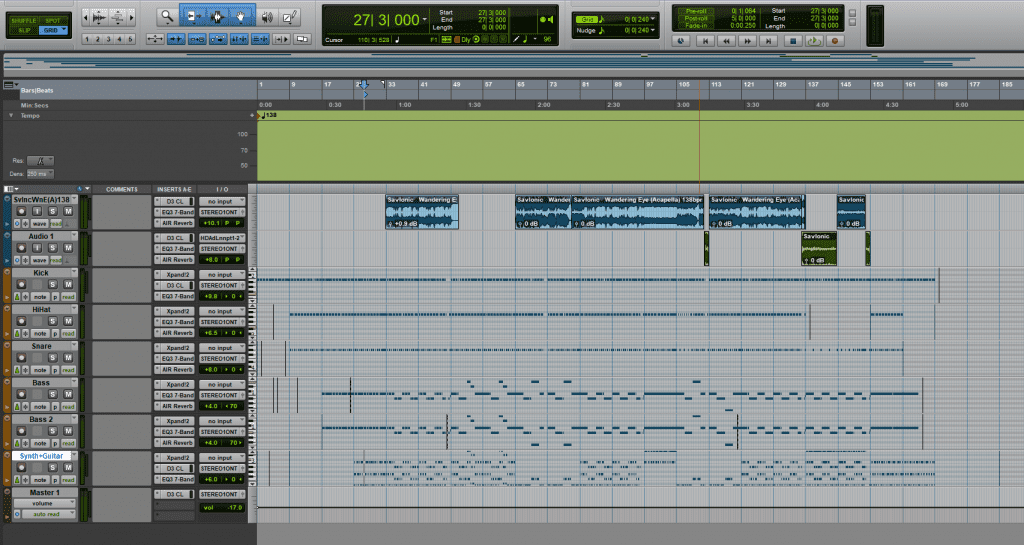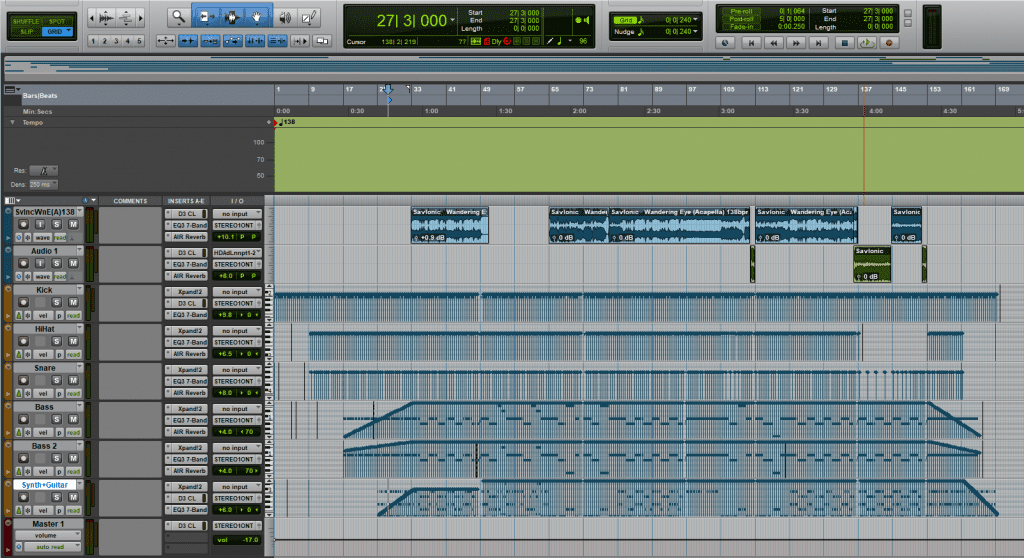The original Wandering Eye song by Savlonic (2011) was the inspiration for creating this remix for the EP. Savlonic are a synthpop (pop music featuring heavy use of synthesizers/electronic instruments) virtual band (where the band members are portrayed as animated characters, a term that was popularized by the Gorillaz in 2001) that was created by the flash animator Jonti “Weebl” Picking, and consists of himself voicing the lead singer called Thunderpants, his wife Sarah Darling voicing the singer/keyboardist called Evangeline D’isco, and Katt Wade as the voice behind the drummer Kandi Flaus. Their first single as a band was Electro Gypsy in 2008, and their first album, Red, was released in mid 2014. Wandering Eye was their third single, and was a song that I remembered quite vividly since its release on Weebl’s YouTube page. I was 14 at the time it was released, and hearing the song again after 7 years has inspired me to create a dance remix of it.

Wandering Eye Dance Remix – The ProTools Session
When it came to getting the vocal parts for the remix, I downloaded the vocal files from the official acapella that Weebl uploaded on his YouTube channel. I did this because I wanted to do a proper remix of a song that I listened to for a lot of my teenage years, and I felt that using the official vocals would help to make that a reality. In addition, I knew I had permission to use the vocals in my remix because, in the description of the video, Weebl himself stated: “Feel free to use this audio for remixes but please, please, please don’t release any tracks you make with it commercially unless you get our permission first”. Once I downloaded the vocals and inserted them into the ProTools session with the right tempo to go with it (138 bpm), I was ready to begin the sequencing process.
I started with the drum set, including a kick drum, a hi-hat, and a snare, to form the basis of the songs rhythm. The kick is a basic ‘4 on the floor’ pattern (4 beats per bar), with the last 2 beats on every second set of 4 kicks being a triplet of kick drum hits. In addition, the hi-hat is sequenced to be on every other 8th note so it plays between the kicks, which is a common trance pattern (1:05 – 2:08 in the video linked), while the snare is on every 2nd beat, otherwise known as the backbeat. All of this was done because I wanted to create a Techno remix of Wandering Eye, and using a very common Techno drum beat to keep the rhythm for the remix was an obvious first step. After this, I then had the task of creating the bass-line synthesizers, as well as a more melodic sound, to give the track some life.
I had 2 bass synth tracks layered on top of each other, but panned to the left and right to avoid cluttering the sounds too much and provide some space within the song. In regards to the sequencing pattern, both tracks copied the kick drum pattern because I wanted them to be helping to accentuate the kick drum beats and boosting the rhythm of the song, while still providing the bass-line which supported the vocals and the melody.
The melodic synth plays an arpeggio (when the notes of a chord are played one after another instead of all at once) melody for the chorus, the same for the middle section (although an octave higher in pitch), and then shows a unique difference for the verses, where it is structured to play 5 notes every bar. This drastic change for the verses is because I wanted the vocals to take over the melody from the synth within those sections of the song, shifting focus away from the instrumental background to the vocals. The reason I didn’t do this 5-note pattern on the choruses is because the choruses repeat themselves, and while the vocals are still the most prominent feature in that section, I wanted a melodic arpeggio to back them up in order to make the chorus sound more ‘exciting’.

Wandering Eye Dance Remix – The use of Velocity in the sequenced elements
In regards to the velocity changes within the song, there are only two major areas to talk about: the build up to the vocals and the fade-out at the end. The velocity of the tracks was quite high throughout the entire song to make each of the sounds and beats sound more intense (as velocity is similar to how a piano key behaves – the harder it is pressed, the more forceful the note is), following on from the steady increase of the velocity of the synths at the start. I did this, as well as the fade-out at the end of the song from the slowly reducing velocity, because I wanted to add some variety to the start and end of the song, so it wasn’t completely repetitive the whole way through and served as a clear intro and outro to the song.
